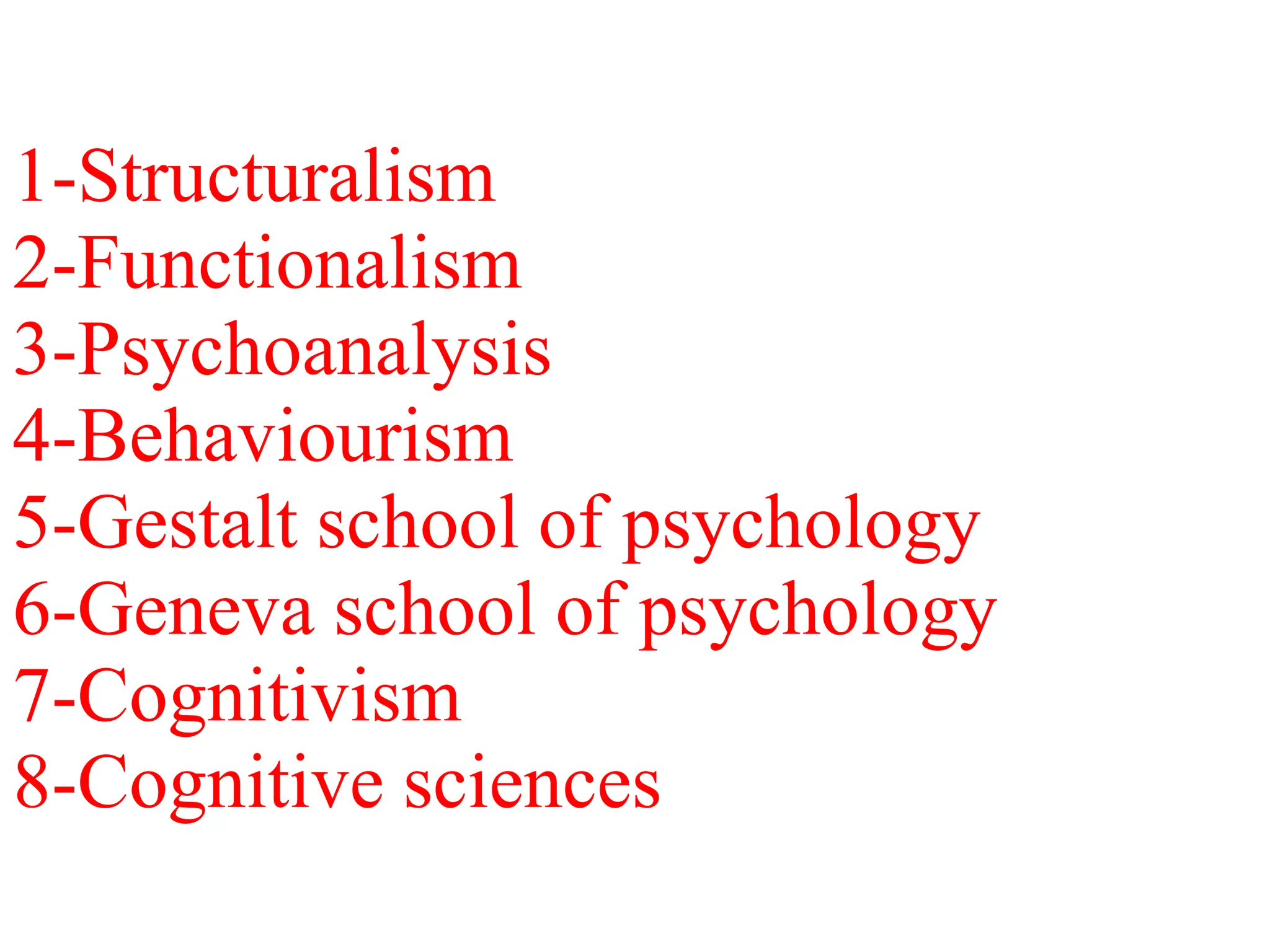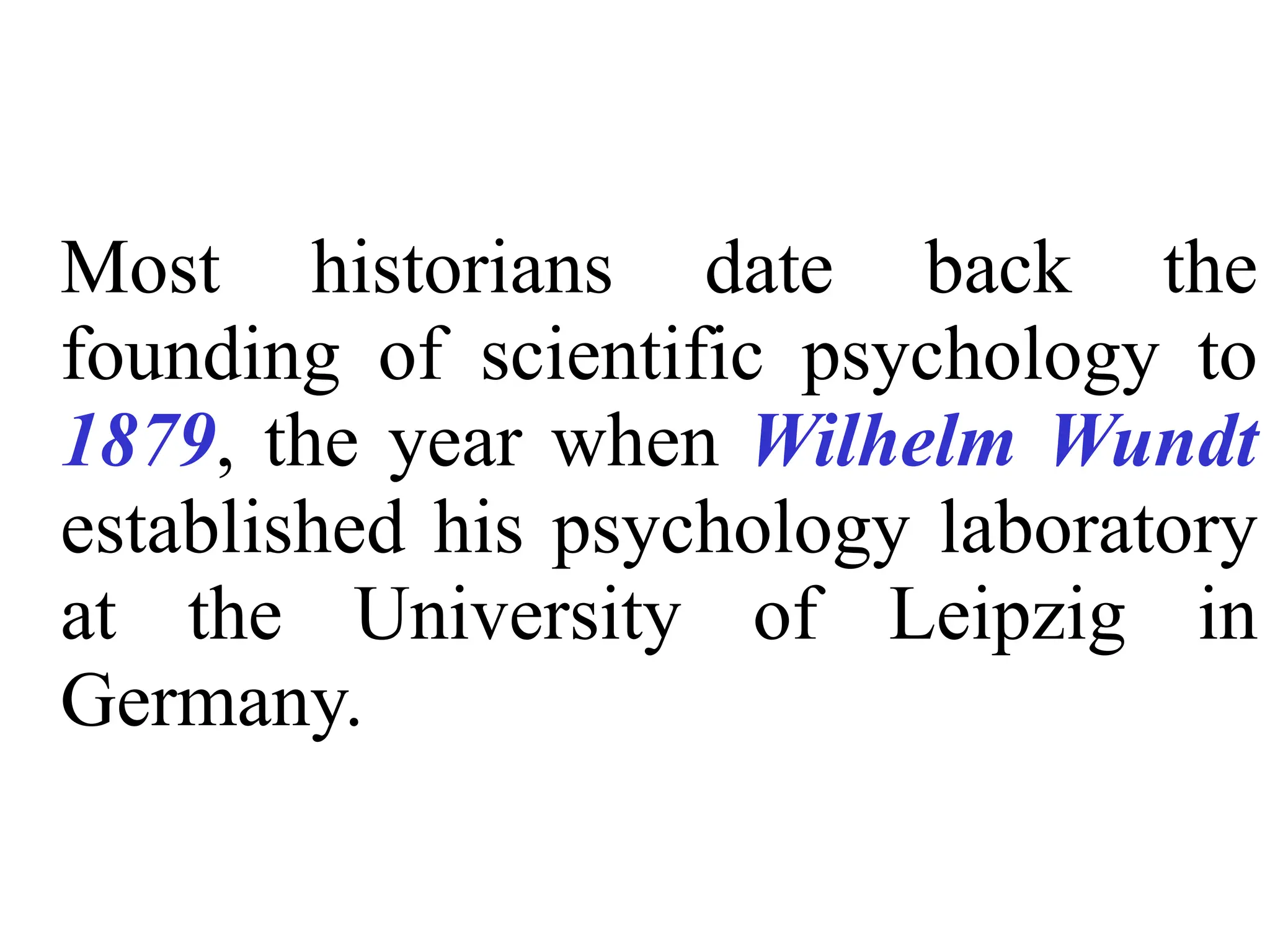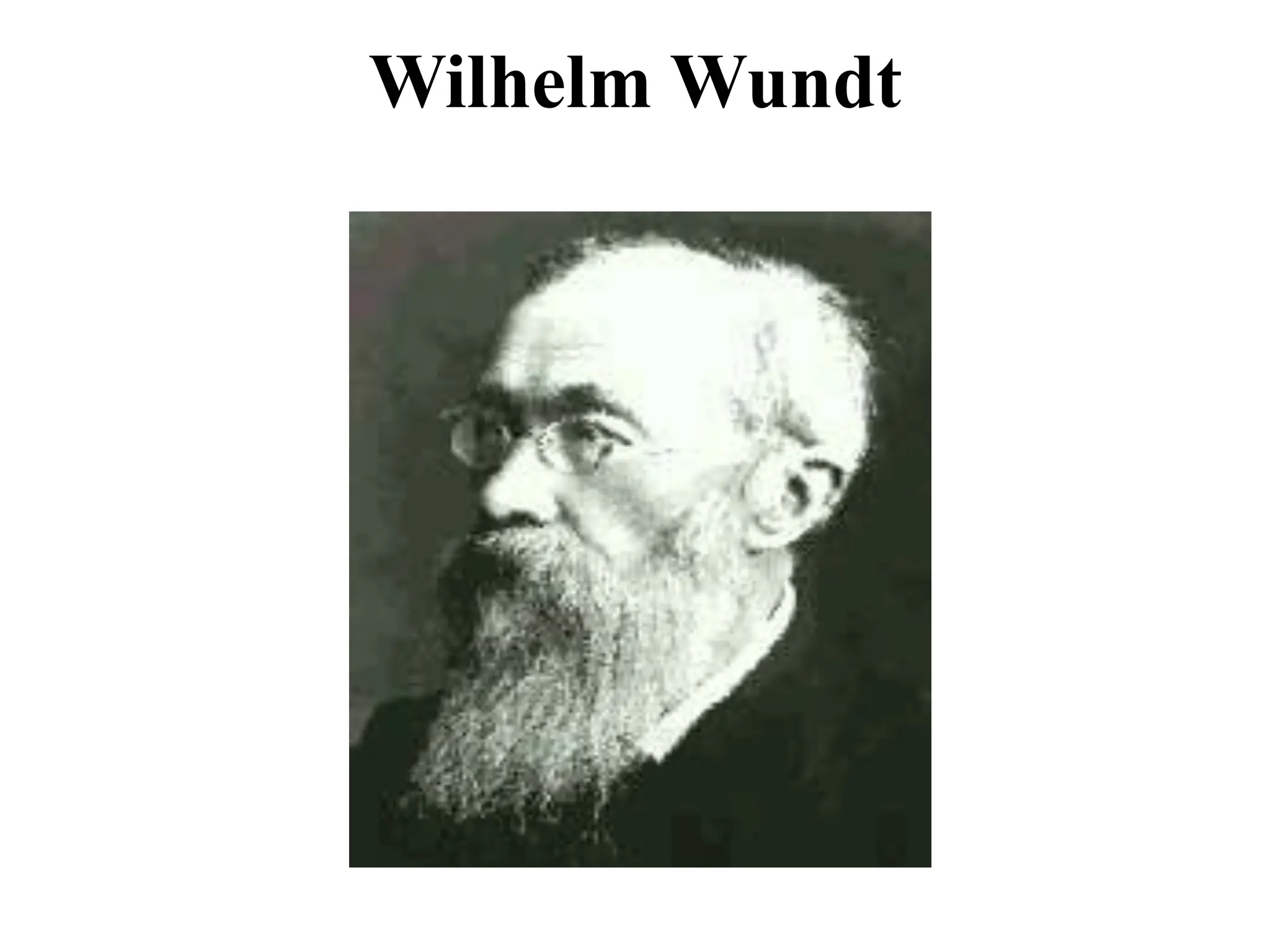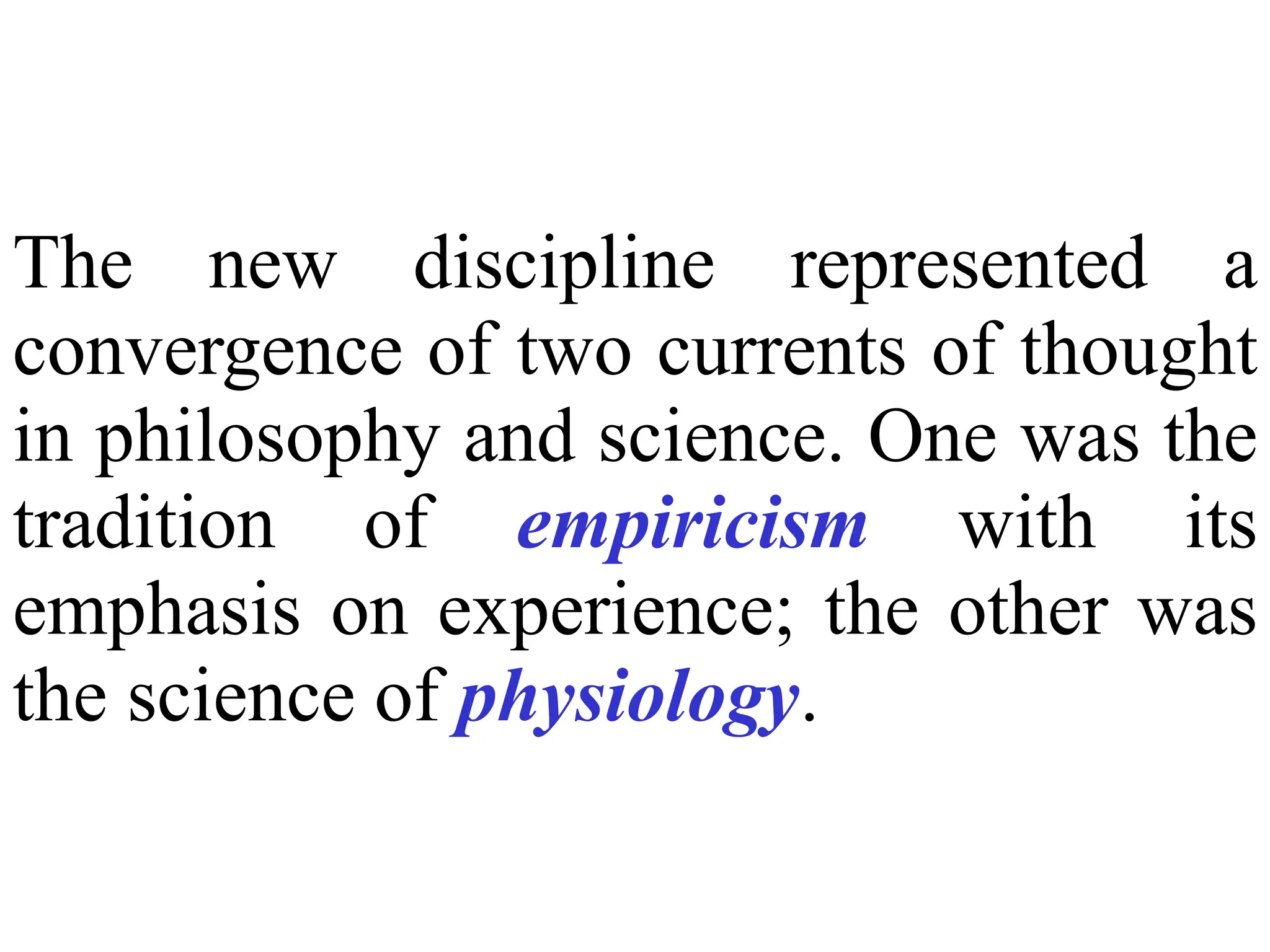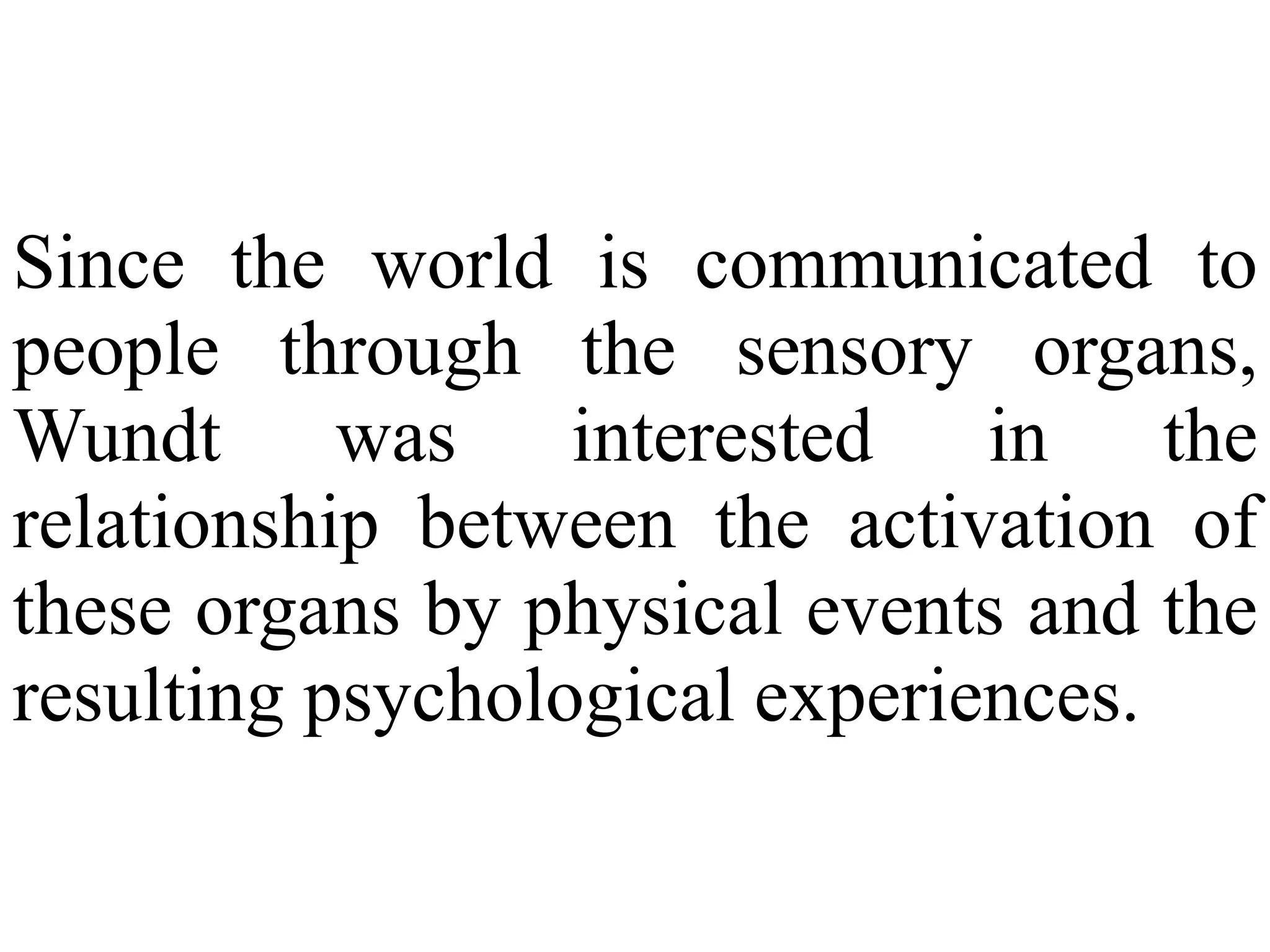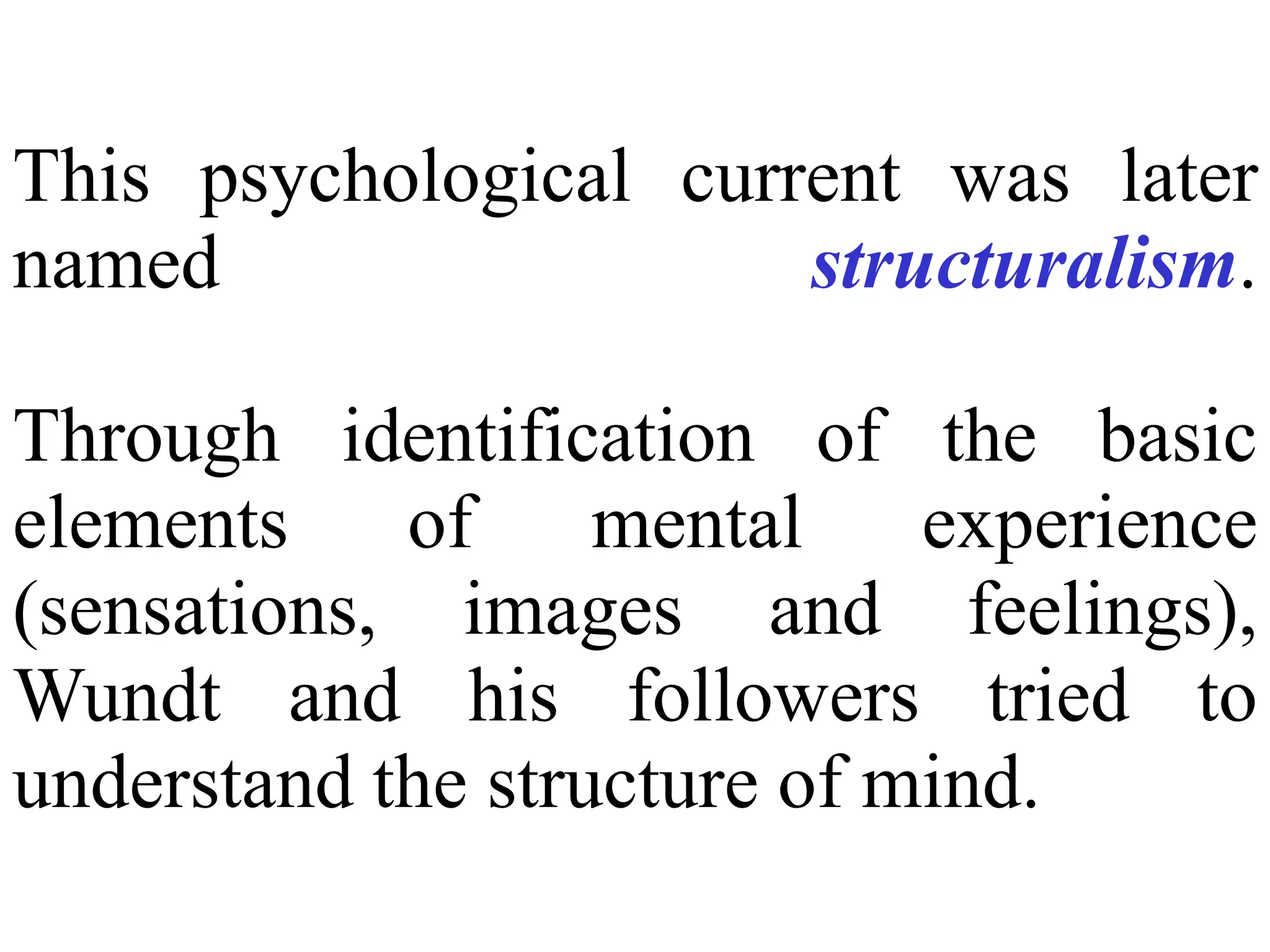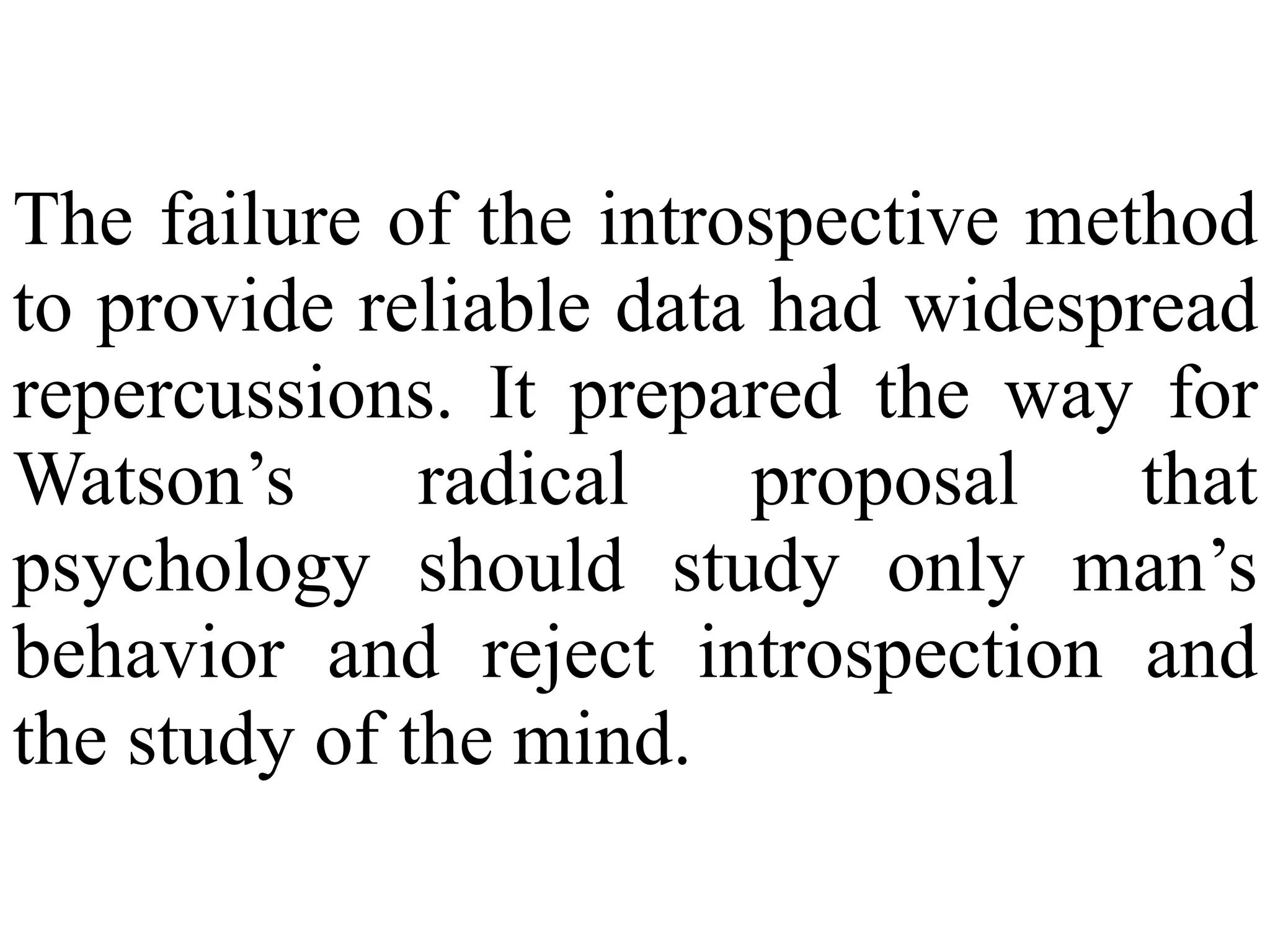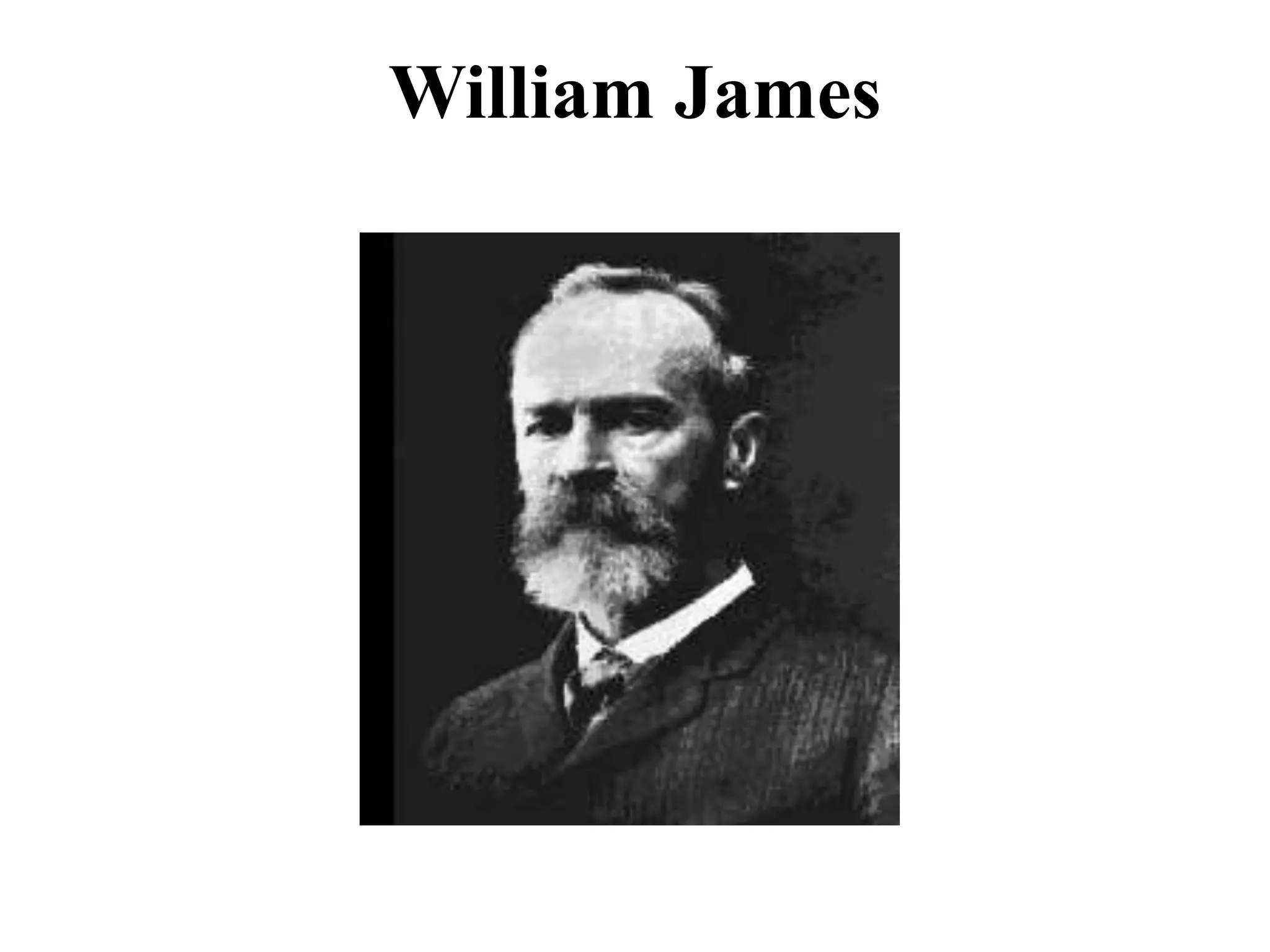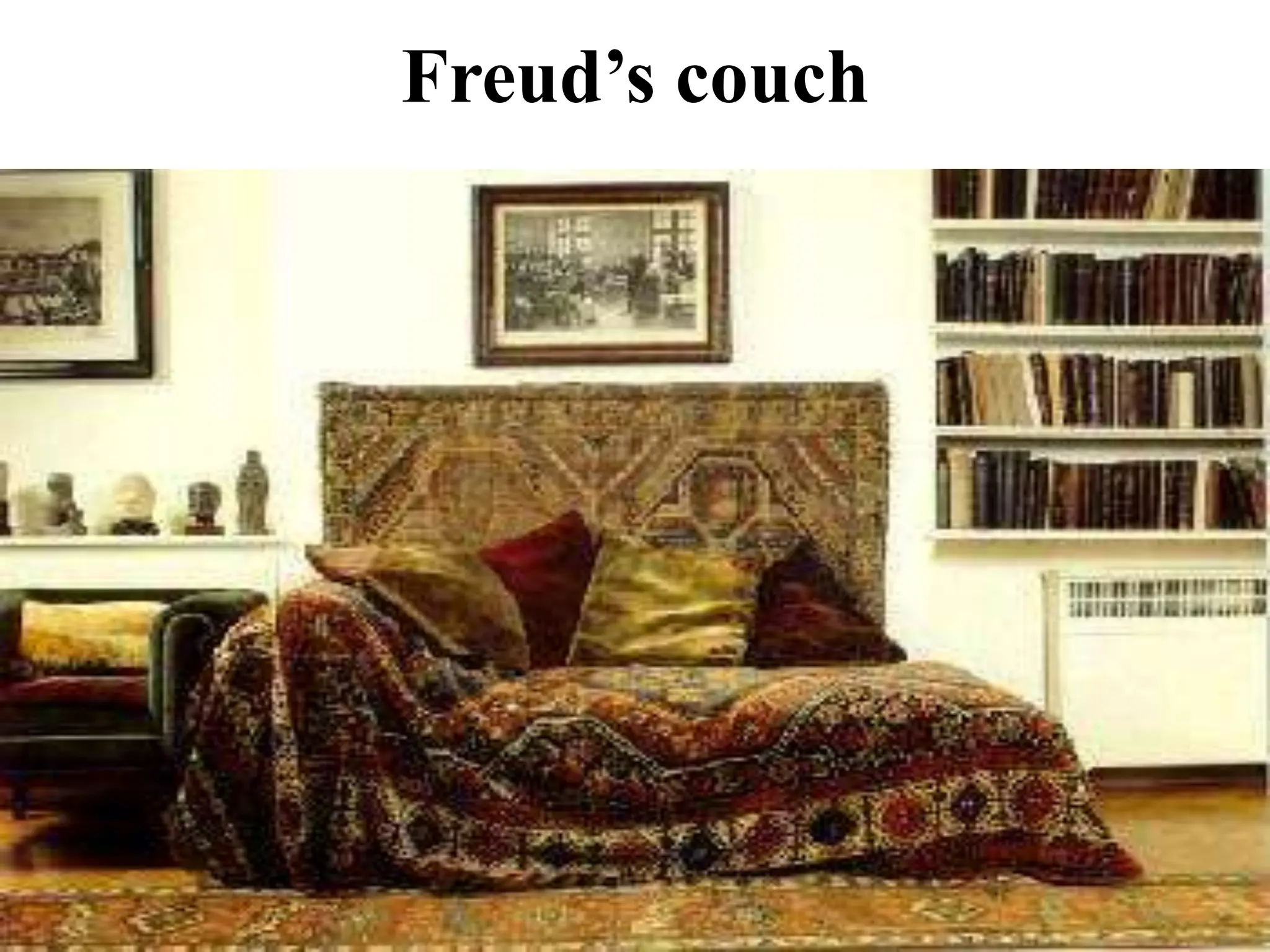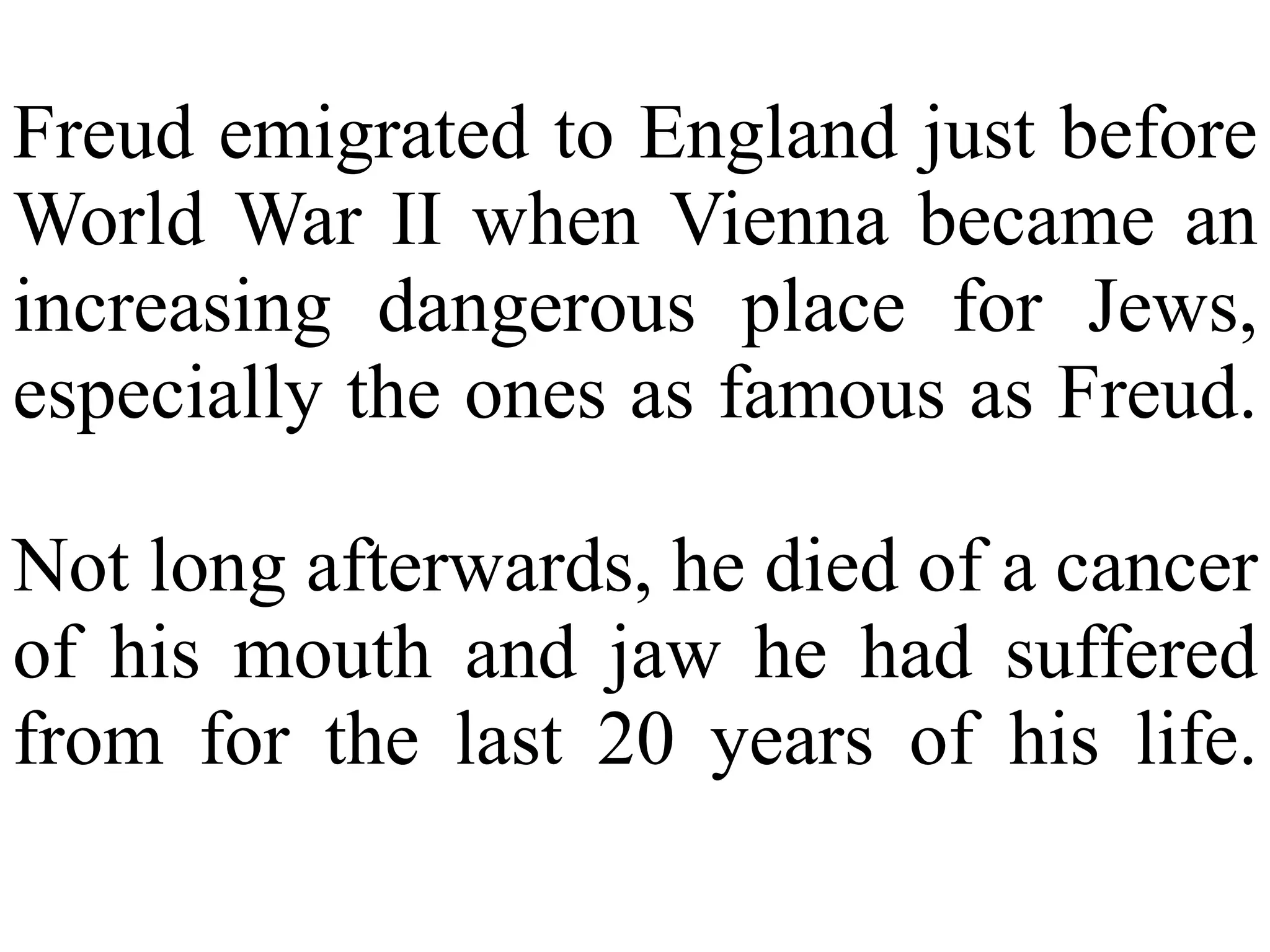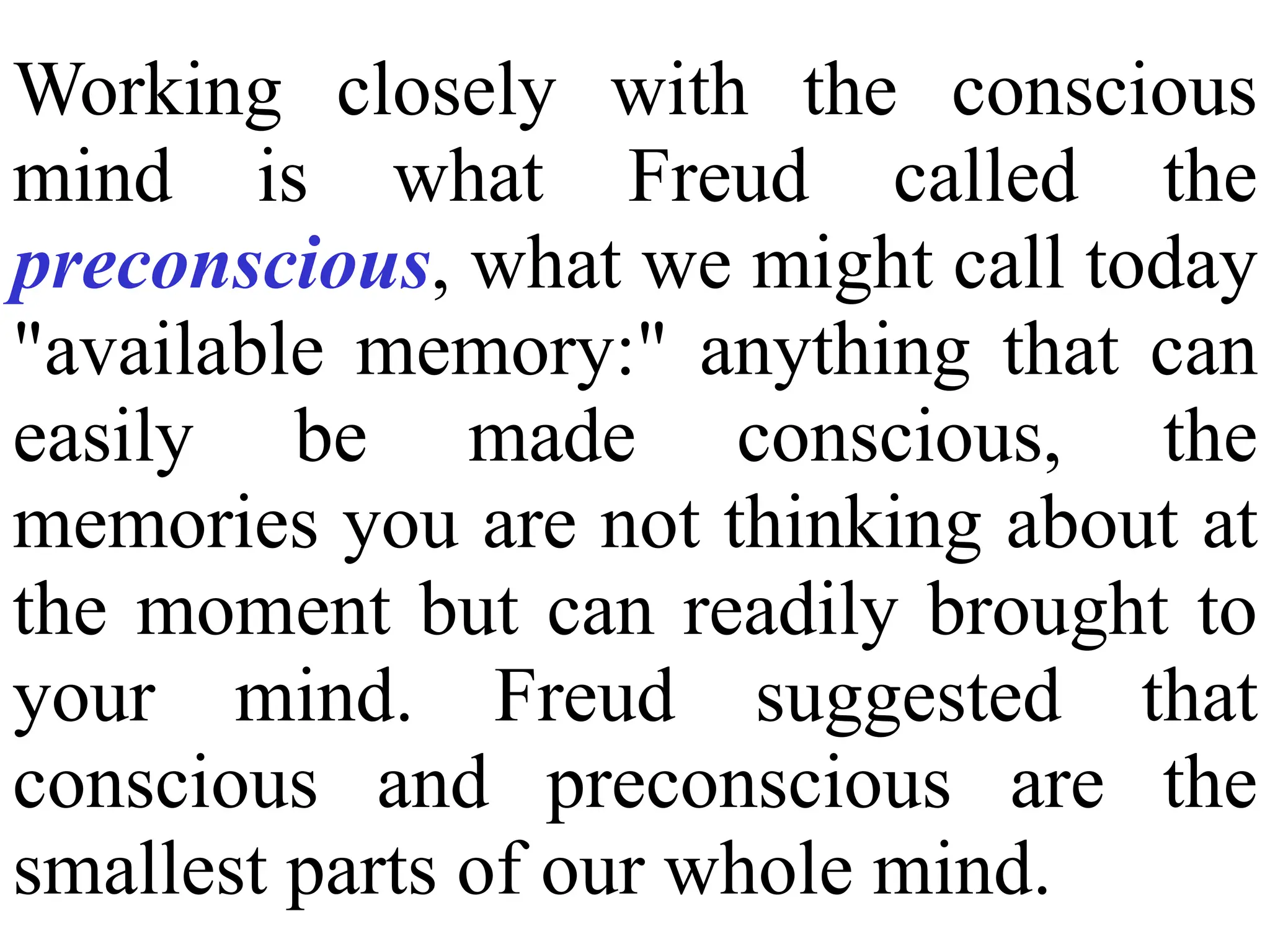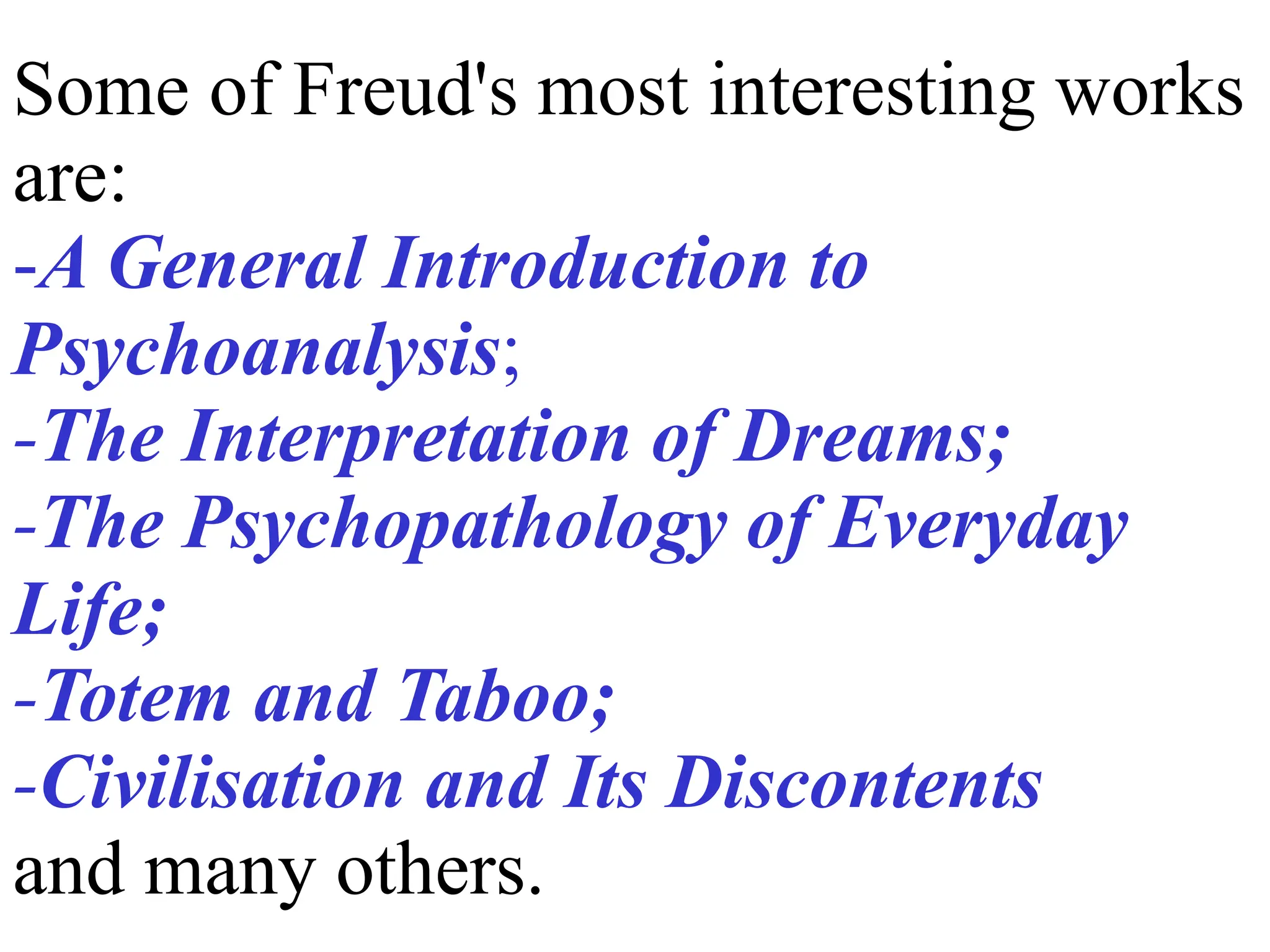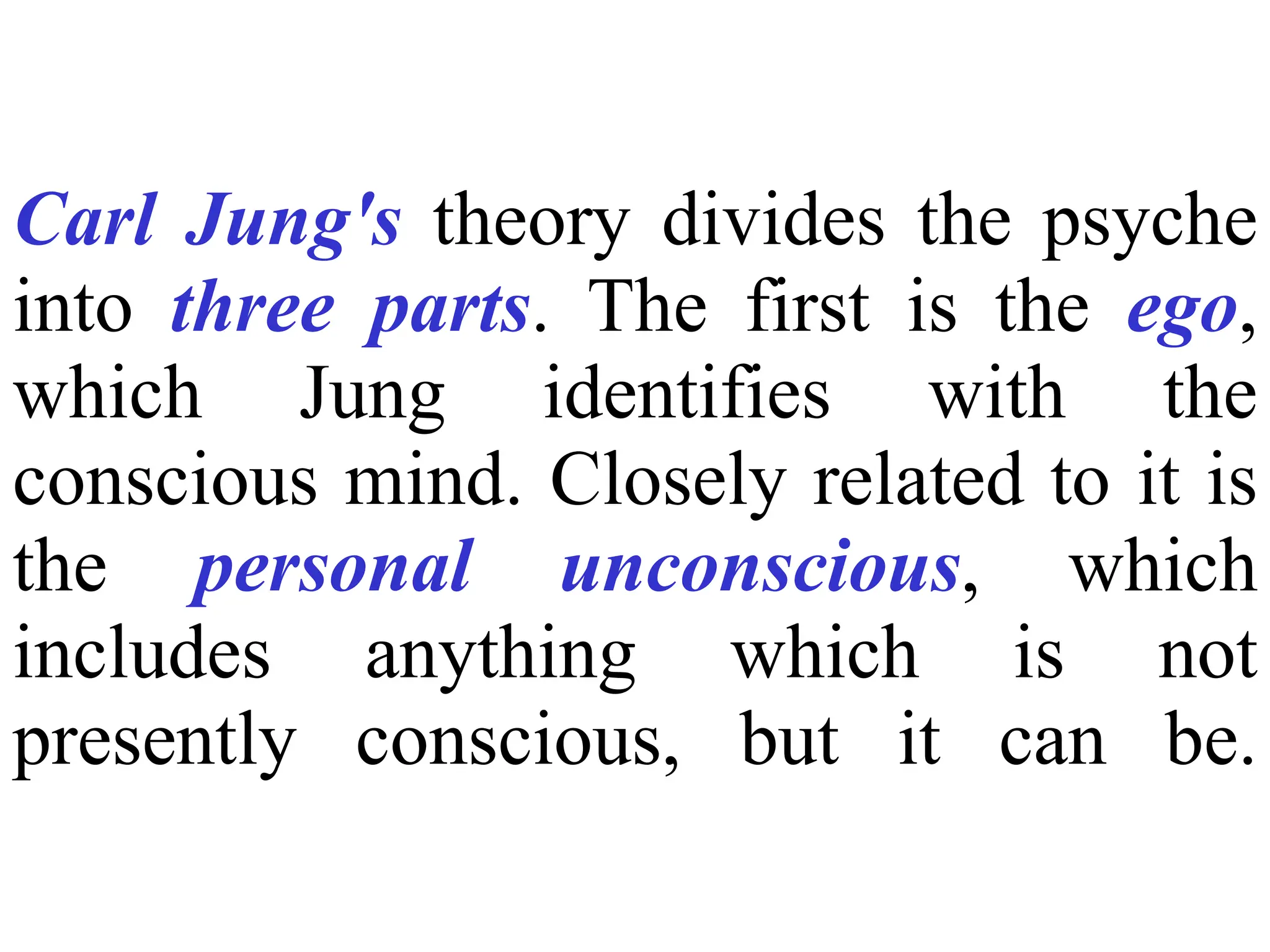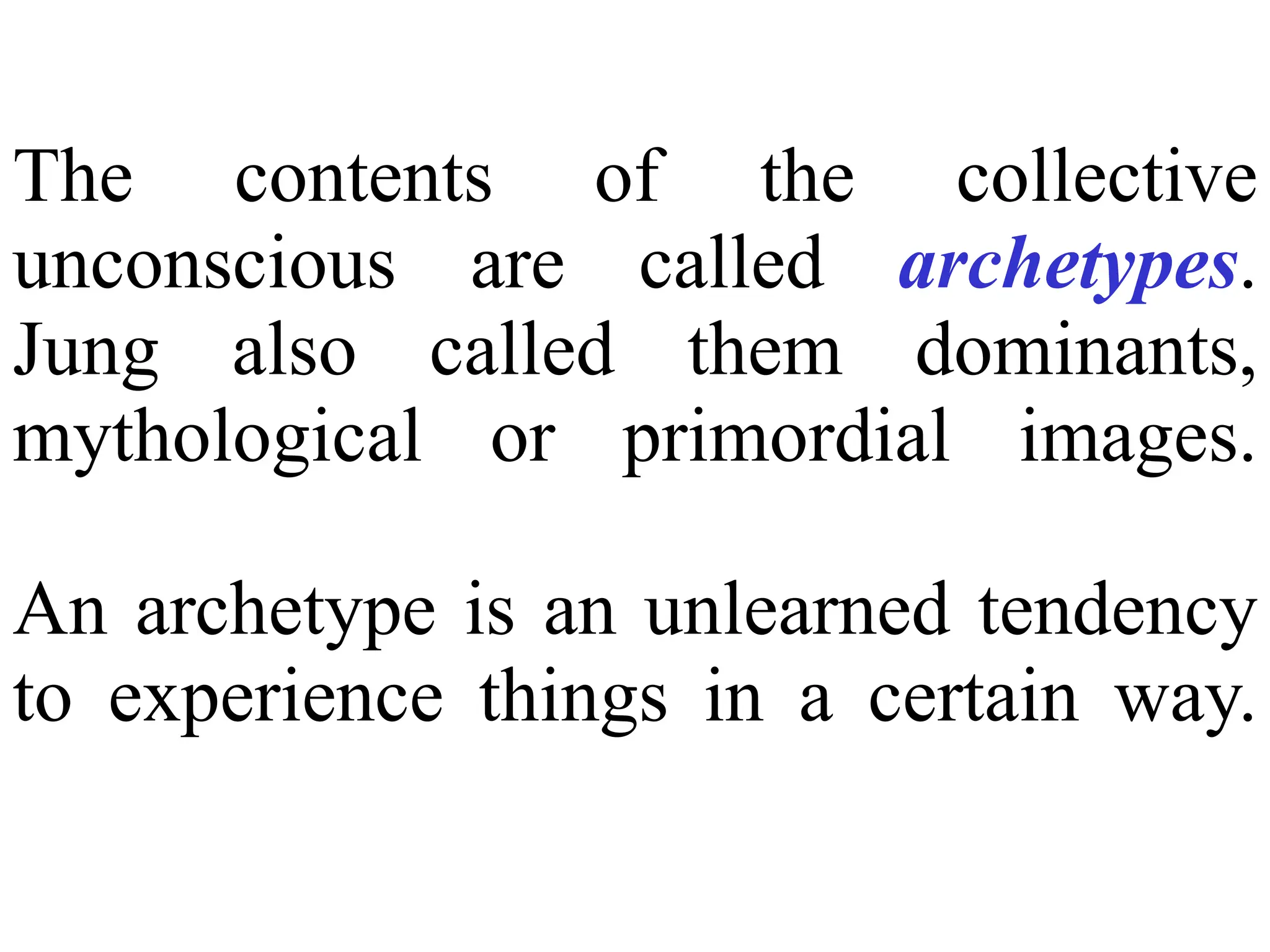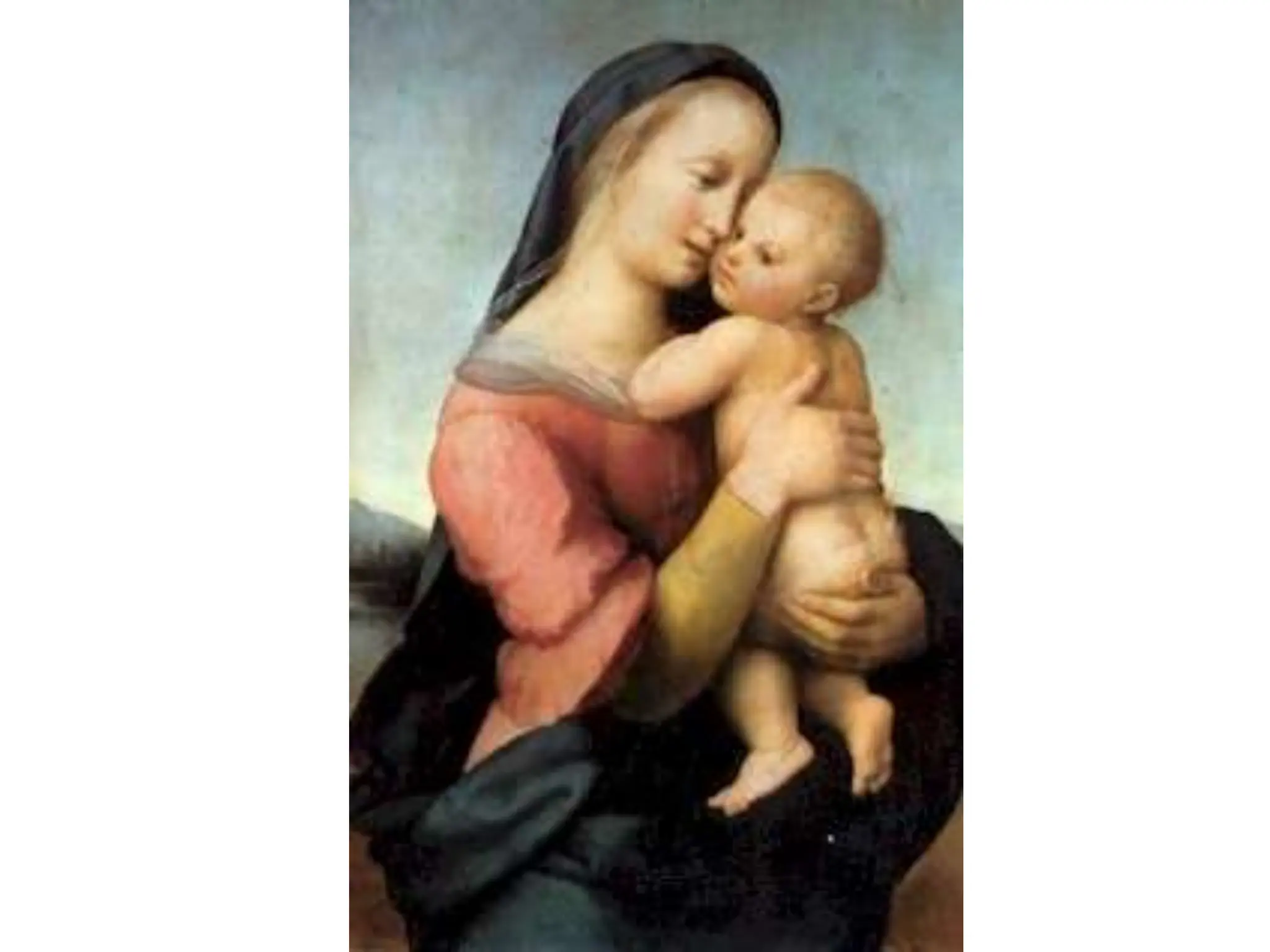Wilhelm Wundt established the first psychology laboratory in 1879 at the University of Leipzig, marking the beginning of psychology as a distinct science. Wundt's structuralism approach used introspection to analyze the basic elements of consciousness. However, introspection proved unreliable. William James then proposed functionalism, studying how the mind functions in relation to behaviors and adaptation. Sigmund Freud introduced psychoanalysis, focusing on the conscious, preconscious, and unconscious mind. He believed unconscious drives and desires influence behaviors. Carl Jung expanded on this with his concepts of archetypes in the collective unconscious, including the persona, anima, animus and mother archetypes. These early founders laid the groundwork for modern psychology.



